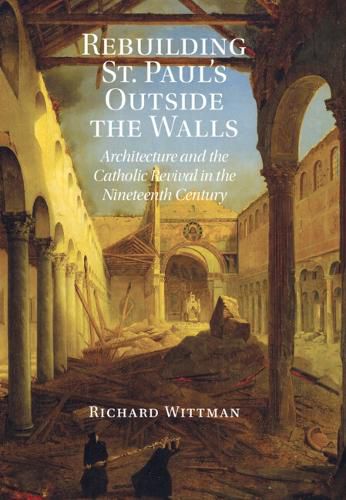Readings Newsletter
Become a Readings Member to make your shopping experience even easier.
Sign in or sign up for free!
You’re not far away from qualifying for FREE standard shipping within Australia
You’ve qualified for FREE standard shipping within Australia
The cart is loading…






In 1823, the fourth-century basilica of St. Paul's Outside the Walls in Rome was destroyed by a catastrophic fire, prompting debate as to whether, and in what style, it should be reconstructed. Two years later, Pope Leo XII made the unprecedented decision to rebuild St. Paul's as an exact replica of its predecessor, which resulted in the most expensive construction project in Rome since the early modern rebuilding of St. Peter's. In this study, Richard Wittman traces this reconstruction within the context of the Church's struggle to adapt to a radically changed and changing world. He offers new perspectives on European architectural modernity and its negotiations with the past, and problematizes received ideas about the sources and significance of architectural historicism. Proposing a new prehistory of the great Catholic revival after 1850, Wittman's study demonstrates the key role that religions motivations played in the formation of modern mentalities, and particularly the historicist component.
$9.00 standard shipping within Australia
FREE standard shipping within Australia for orders over $100.00
Express & International shipping calculated at checkout
Stock availability can be subject to change without notice. We recommend calling the shop or contacting our online team to check availability of low stock items. Please see our Shopping Online page for more details.
In 1823, the fourth-century basilica of St. Paul's Outside the Walls in Rome was destroyed by a catastrophic fire, prompting debate as to whether, and in what style, it should be reconstructed. Two years later, Pope Leo XII made the unprecedented decision to rebuild St. Paul's as an exact replica of its predecessor, which resulted in the most expensive construction project in Rome since the early modern rebuilding of St. Peter's. In this study, Richard Wittman traces this reconstruction within the context of the Church's struggle to adapt to a radically changed and changing world. He offers new perspectives on European architectural modernity and its negotiations with the past, and problematizes received ideas about the sources and significance of architectural historicism. Proposing a new prehistory of the great Catholic revival after 1850, Wittman's study demonstrates the key role that religions motivations played in the formation of modern mentalities, and particularly the historicist component.